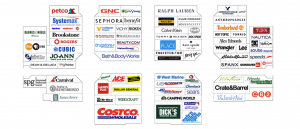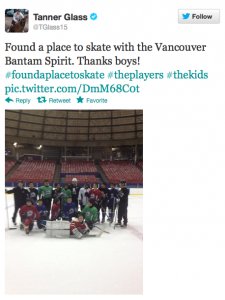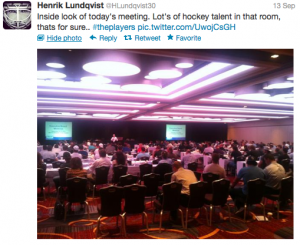Grouped: How small groups of friends are the key to influence on the social web by Paul Adams is a very enjoyable read for anyone interested in social media marketing or social anthropology and its application to the online world. I choose Grouped because I am interested in social media marketing, due to a startup mobile app project I am involved in, and also because it was published in November 2011 making the content and examples very current. Grouped is structured around the idea that humans are social animals and have been so for hundreds of years. As such, our habits and behaviours offline are now catching up to our activity online. The main argument is that individuals are very connected online, specifically in many small groups with people of very similar interests, and it is more important to focus on these small, connected groups of people rather than one or two highly influential individuals.
The author presents many thoughtful ideas/themes for marketers to consider when using social media (web) and does so in a convincing manner. Three areas of interest (and the implications that accompany them) for marketers are:
– the traditional customer acquisition funnel is no longer a one way, linear street, instead it is a loop with feedback involved throughout
– despite the fact we have large online followings and networks of friends we really only communicate with a small group of friends and do so very directly, so the size (magnitude of their following) of the influencer may not be as important as previously thought
– companies that use social media to promote their brands are better served moving away from interruption marketing (shouting as its commonly referred to) towards permission marketing, customers will communicate with you but only if they agree to it before hand
Grouped presents a similar argument to this McKinsey article in that the traditional customer acquisition funnel is no longer a linear, one way street, instead it is a feedback loop where social media can influence customer’s decisions at all stages. This is especially evident in the post purchase stages. Social media has allowed companies to create brand advocates and empower them to speak highly of the brand to their friends, thus bringing more people into the beginning of the funnel. Social technology like Twitter, Facebook and blogs are where much of this brand advocacy takes place. I think this relates well to Groundswell’s technographics segmentation in that the conversationalists, critics and creators can all become brand advocates much easier in the online world compared to offline. This also benefits the spectators and collectors who can now easily access information while they are literally in the funnel, like a retail store for example.
Another interesting point the book presents is that despite the large followings and networks of friends we have offline and online we really only communicate on a personal level with a small number of people. This is evidenced by some facts from the book, “80% of our phone calls are to the same 4 people, despite having contact/phonebooks of hundreds of people” and, “62% of our conversations are with the people closest to us”. The implication here for marketers is that rather than communicating at individuals or trying to shout at them marketers need to employ permission marketing where potential consumers allow marketers to speak to them through permission such as “liking or following” a brand on social networks. From there companies/brands can communicate on a personal, more intimate level, which will create a better result than targeting the masses with generic content. This also translates well to the earned, owned, paid model. Increasing the earned and owned marketing presence of a brand through social media is far more cost effective than a paid vehicle.
This relates to another argument in the book that contradicts Malcolm Gladwell’s “Law of the Few” that states that there are a small number of very influential people in society and if you reach and influence them they will influence hundreds and thousands more. Grouped argues that is how the world works in theory, but not in real practice as noted in chapter 5, “highly connected does not mean highly influential”. The author backs up this assertion with this stat, “Twitter users with the most followers do not necessarily have the greatest number of retweets or the greatest number of mentions.” What drives this point home is Duncan Watts’ research that the most important factor in determining whether an idea spread was not whether there was influential people, but whether there was a critical mass of easily influenced people who were connected to other people who were easy to influence. Although that is a long and confusing statement I think it is very much true in the startup world I have experienced. A lot of time and resources can be wasted trying to reach and target so called experts or highly influential people (say someone with 50,000 twitter followers or 5,000 fans on Facebook), when a better strategy would be to target local, connected individuals (say someone with 2,000 followers and 500 friends on Facebook) whom have a loyal network of followers with similar interests who are open to new ideas.
A major strength of the book is the depth of research provided, not just in facts and figures but the references at the end of each chapter. As a reader if one particular idea or theme triggers something and you want more information then the references provide ample means for further context and exploratory research. Another strength of the book is the timeliness of the examples. Obviously having been published under a year ago the content is expected to be current but I find this to be very important when trying to understand something like social media and online marketing that change at a dynamic pace. Take for example Groundswell, it was published in 2008 and already has an updated version that includes a chapter about Twitter that was published in May 2011. This shows that in order for the ideas to be received and contextualized by the reader the content has to be timely. These two factors, combined with the “Quick Tips” included throughout the book, make Grouped successful in conveying the application of our offline behavior to the online activity in today’s digital world.




